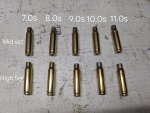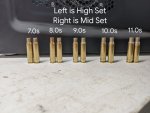Sitting on grains of (dirt) something you can see under there.
The color change looks normal on that case on the right even if meaningless in the long run.
Looks a lot like the same ammount as on starline when I get some of it.
The color change looks normal on that case on the right even if meaningless in the long run.
Looks a lot like the same ammount as on starline when I get some of it.
Last edited:





